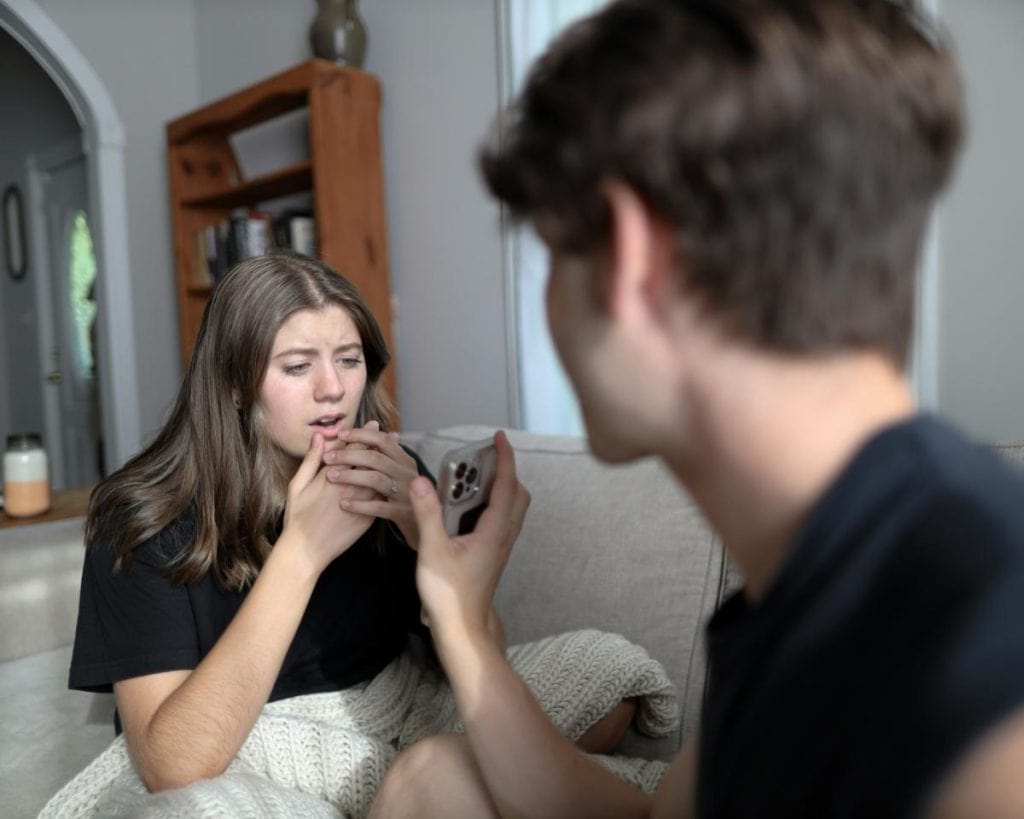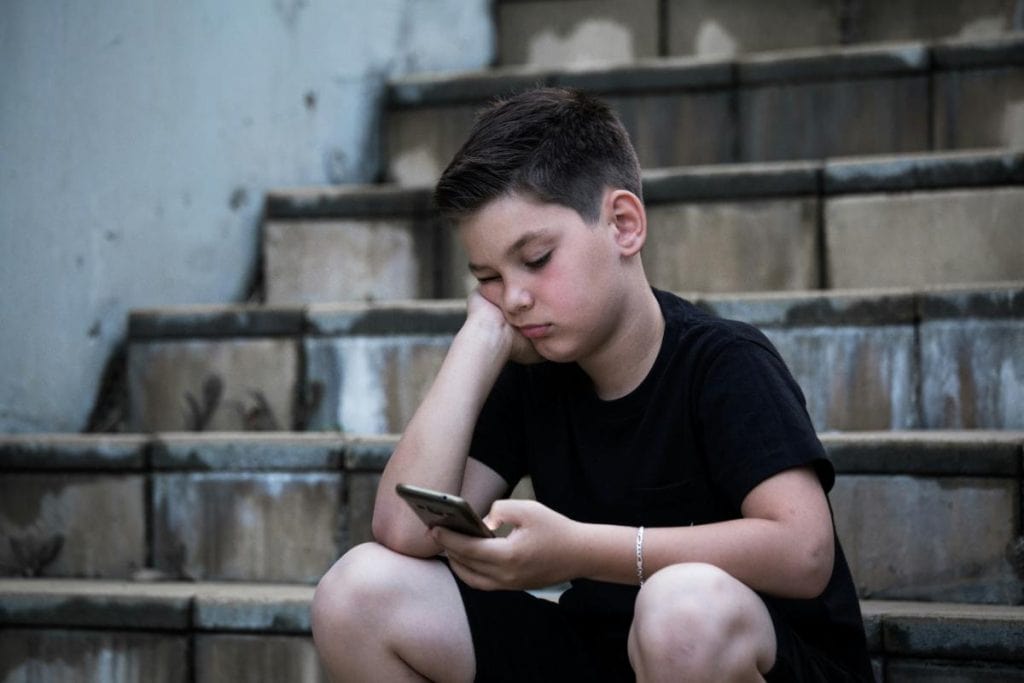In the age of smartphones, tablets, and computers, technology has become an inseparable part of our lives. While offering countless benefits, the ubiquitous presence of screens has also cast a long shadow, particularly on the lives of teenagers.
A staggering 95% of teenagers between 13 and 17 are active on social media, highlighting the platform’s pervasive influence on this age group. Even more alarming, about one-third of these young people are virtually inseparable from their devices, constantly scrolling, posting, or interacting on these platforms.

Excessive screen time has emerged as a growing concern, with potential detrimental effects on physical, mental, and emotional well-being. From sleep disturbances and impaired cognitive function to social isolation and addiction, the consequences of unchecked screen usage are far-reaching.
In this article, we explore the multifaceted impact of excessive screen time on teenagers, examining the scientific evidence that underscores these concerns.
Understanding Excessive Screen Time
Excessive screen time means spending too much time on devices like phones, computers, and tablets. Teens often spend hours on social media, streaming videos or games. It’s important to know the difference between normal and excessive use, as too much screen time can cause problems.
Excessive screen time harms physical health by disrupting sleep, reducing activity, and hindering social skills. It also increases mental health risks like anxiety and depression due to blue light interference and decreased face-to-face interaction.
The US Surgeon General’s Advisory highlights a concerning trend. Adolescents spending over three hours daily on social media are twice as likely to suffer from deprived cerebral strength, including anxiety and depression symptoms. This finding underscores the urgent need to address excessive screen time among teens.
How can parents identify if their teen’s screen time is excessive?
Signs of excessive screen time include decreased interest in hobbies or social interactions, neglect of schoolwork or chores, and sleep disturbances. Additionally, mood swings, physical complaints like headaches or eye strain, and social isolation are common indicators. Open communication with your teen is crucial for identifying potential issues.

Physical Health Impacts
Spending too much time on screens can harm teenagers’ physical health in various ways. Prolonged periods of sitting and screen use contribute to a sedentary lifestyle, which is linked to obesity and related health issues. Spending too much time hunched over screens can lead to body aches, especially in the back and neck.
A recent NIH study found that over 65% of US adolescents exceed the recommended limit of two hours of recreational screen time daily. This high level of screen exposure contributes to various health issues, including eye strain. Symptoms of eye strain, often referred to as “computer vision syndrome,” include dry eyes, headaches, and blurred vision.
Mental Health Concerns
Excessive screen time can significantly impact teenagers’ mental health. Prolonged exposure to digital devices is linked to increased risks of anxiety, depression, and emotional distress. Constant exposure to carefully crafted online images can make teens feel inadequate and lower their self-worth.
The overwhelming stimulation from screens can also interfere with sleep, which is essential for emotional balance and mental well-being.

Social Implications
Excessive screen time can significantly impact a teen’s social development. With the virtual world becoming increasingly captivating, face-to-face interactions often take a backseat. Reduced face-to-face interactions can hinder teens’ ability to develop crucial social skills like understanding others’ feelings, effective communication, and resolving disagreements peacefully.
Furthermore, the pervasive nature of social media can lead to social isolation and a diminished sense of belonging in teens.
Adverse Effects of Too Much Social Media Involvement
Social media platforms have revolutionized communication, but excessive use can have detrimental consequences. Constantly seeing carefully crafted online images can make teens feel bad about themselves. Comparing their own lives to the perfect pictures shared on social media can create unrealistic expectations and damage self-esteem.
The potential negative impacts of social media have led to increased scrutiny. For example, several lawsuits against Instagram have raised concerns about the platform’s effects on young users’ mental health. In the Instagram lawsuit, plaintiffs allege that the platform designed addictive features specifically targeting young users.
TruLaw notes that Instagram’s design is intentionally addictive. Features like endless scrolling and constant notifications are engineered to keep users hooked, often at the expense of mental well-being. This compulsive use can worsen existing mental health issues and create a harmful cycle of dependency on the platform.
What impact can excessive social media involvement have on a teen’s life?
Overindulgence in social media can negatively impact teens’ mental health and social lives. Excessive use can lower self-confidence, increase anxiety, and disrupt sleep. Also, it might lead to social withdrawal and fewer real-life connections, affecting overall well-being and relationships.
Practical Ways to Manage Screen Usage
A study published on Springer Link found that bedtime smartphone use was extremely common among students, with 96.5% engaging in it. Nearly half (46.9%) used their phones for over two hours, primarily for social media (74.2%) and communication (48.8%).
Those who used smartphones at bedtime experienced notably poorer sleep quality and longer time to fall asleep. They also had more trouble staying asleep and shorter sleep duration compared to those who did not use phones. The study also identified a significant link between poor sleep quality and lower academic performance.
Effective screen time management starts with establishing clear rules and promoting other interests. Setting daily or weekly screen usage limits helps teens find a healthy balance between their digital life and other activities. Encouraging hobbies like reading, sports, or creative projects can provide healthy alternatives to excessive screen use.
In addition, establishing screen-free zones, such as during meals and before bedtime, promotes more meaningful family interactions and better sleep hygiene.
How can parents effectively communicate with their teens about screen time limits?
Open and honest conversations with teens are key to setting and enforcing effective screen time limits. They should explain the reasons behind the limits, involve teens in setting realistic goals, and emphasize the benefits of balanced screen use.
Tools and Resources for Monitoring and Managing Screen Time
A variety of tools exist to help parents and teens control screen usage. Parental control apps, for instance, allow for setting time limits, filtering content, and restricting access to certain applications. These apps can be invaluable in setting boundaries and promoting digital well-being.
Also, operating systems often include built-in parental controls that allow parents to monitor device usage and set restrictions. Digital wellness features offered by smartphones and social media platforms can provide insights into screen time habits and help users reduce excessive usage.
Creating a Balanced Lifestyle
Creating a balanced lifestyle for teens involves integrating healthy screen habits with diverse offline activities. Encouraging physical exercise, such as sports or outdoor play, helps counteract the sedentary nature of excessive screen use. Incorporating hobbies and interests that do not involve screens, like reading, art, or music, fosters a more varied and enriching lifestyle.
Establishing a daily routine that includes scheduled screen time alongside designated periods for physical and social activities supports balance. Parents can model healthy screen habits and engage in these activities together to reinforce positive behaviors.
Navigating the Digital Landscape for Healthier Teen Lives
Excessive screen time presents a significant challenge for modern teens, impacting their overall wellness. As we navigate the digital landscape, it’s crucial to remain proactive and supportive in helping teens balance technology use. This approach ensures their health and happiness in our increasingly connected world.
